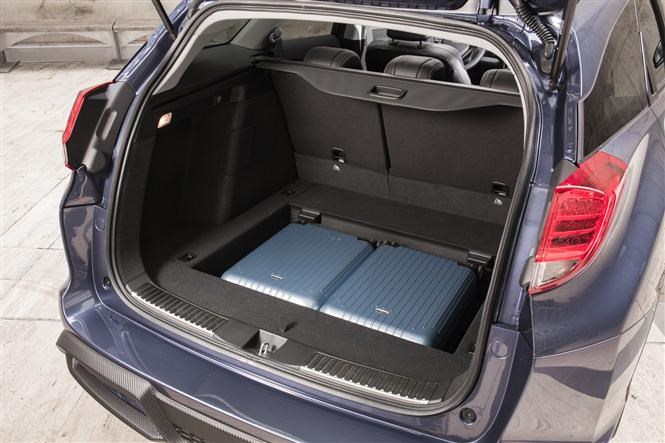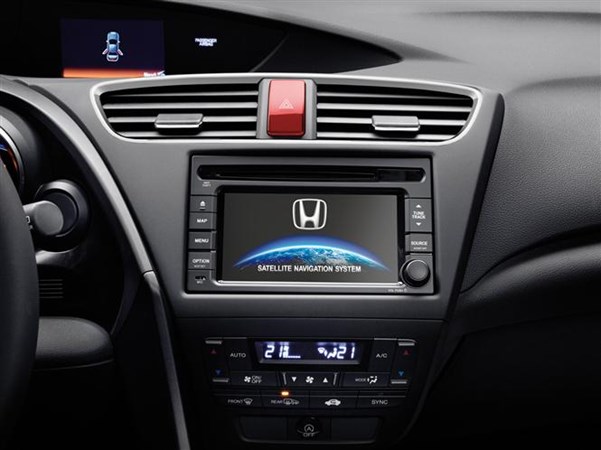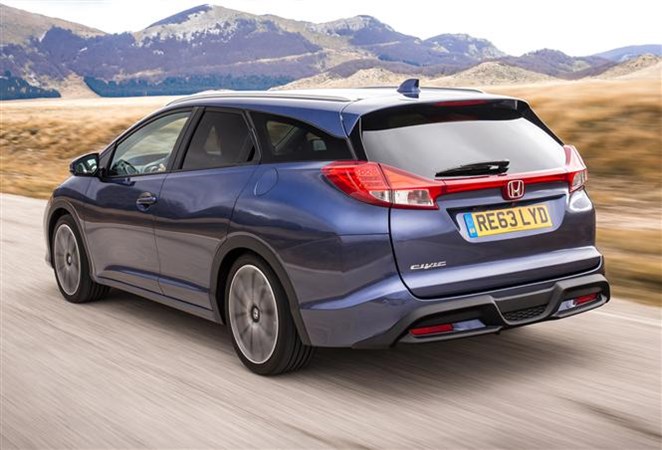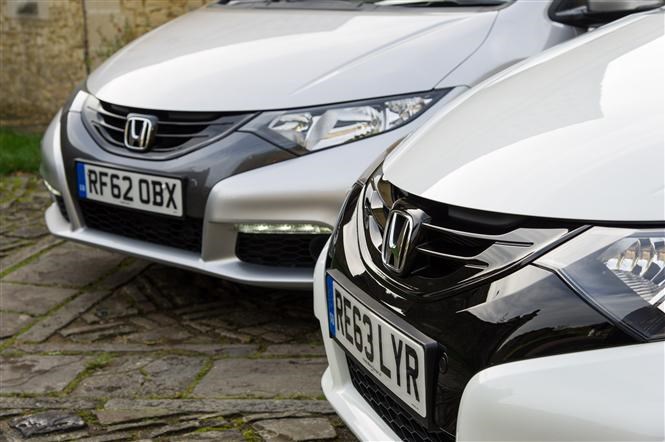The Honda Civic is a great car. It’s incredibly well built, both in terms of its design and durability. It’s great to drive, practical and comfortable.
It’s also confusing, just like most new cars these days. There are numerous configurations on offer, so how do you know which one’s best? We’ve been through the range to discover which specific version makes the best company car.
What about body style?

There’s a £1,000 premium for Tourer over the hatchback Civic, but is it worth the extra cash? We think so. For a start, we reckon the estate version looks nicer. It’s also got a much bigger boot, of course – its 624 litres far outweighing the hatch’s 477 litres.
In terms of running costs there isn’t a lot in it. The hatch is a few mpg better on fuel, but we doubt you’ll notice that in the real world as both cars return over 70mpg. It’s a similar story for CO2 emissions, the hatch puffing out carbon dioxide at 94g/km and the Tourer at 99g/km. There’s not a huge tax advantage to embrace here.
The estate is 0.2 seconds slower from 0-62mph, while top speed drops from 129mph to 121mph.
With all that in mind, plus the under-floor storage and general added practicality you get with a bigger vehicle, we reckon an extra grand on the list price isn’t a huge price to pay. Considering you’ll only have to pay BIK on a percentage of that premium, it starts to make all the sense in the world.
Which trim level?

You’ve got a choice of four Civic models – S, SE Plus, SR and EX Plus. Both S and SE cars can also be upgraded to –T specification, which means a sat-nav system and Bluetooth connectivity are thrown in too.
We recommend going for SE Plus-T trim, which as well as the sat-nav includes 16-inch alloy wheels, dual-zone climate control, cruise control/speed limiter, rear-view parking camera, automatic lights and wipers, front and rear parking sensors and a multifunction steering wheel to control the multimedia system.
We’d accept that the extra £545 for –T models is worth it. Bluetooth comes in very useful indeed, while a built-in sat-nav not only makes your life easier but looks better and will help prop up the resale value of your car.
Moving up to SR trim is going to cost you another £1,855 and is something we don’t think is particularly worth it. The major additions include larger 17-inch wheels, adaptive rear dampers (which we couldn’t really notice when we tested them), heated front seats and leather seating. None of those features are what we’d call a deal-breaker.
The reason we avoided bottom-spec S trim is it does without some features we’d consider very useful, such as cruise control, front and rear parking sensors, a rear parking camera and automatic headlights and wipers.
While there are a number of optional extras you may need to personalise your car further, if it were us we’d steer clear. You get such a comprehensive range of toys in SE Plus-T trim that we’d stop there unless you have a genuine requirement for the likes of a tow bar or roof box.
Picking an engine
.jpg)
This isn’t as difficult a decision as you might think. There are only two engines available – a 1.8-litre petrol or a 1.6-litre diesel.
Since company car drivers are taxed based upon the CO2 their car emits, and most fleet managers won’t entertain cars over 130g/km, that discounts the petrol model. Its lowest CO2 emissions of 146g/km automatically discount it.
The only time you’d realistically consider the petrol is if you need an automatic gearbox, which you can’t have with the diesel.
So that leaves us with the 118bhp 1.6-litre diesel engine, and that’s no bad thing whatsoever. It’s the same engine we had in our CR-V long-term test car and it’s a very impressive bit of kit indeed. It’s flexible, refined and capable of very impressive fuel economy too.
In our case the claimed fuel economy figure Honda quotes is barely believable; if you can hit anywhere near 74.3mpg while driving normally you’re a far better driver than any of us! It’s reasonable to expect over 50mpg though, and that’s not too shabby at all.
Its CO2 emissions of 99g/km mean company car tax is payable at 15 percent, so a 20 percent tax payer will be in £59 per month, the hatchback costs £52 per month, further illustrating the small sacrifice for a vastly more useful machine.
Verdict:
The version we’d pick is: Honda Civic Tourer 1.6 i-DTEC SE Plus-T.
It’s got the right blend of low running costs, decent equipment levels and of course impressive practicality from the large boot.
Read our full Honda Civic review here.
Read our full Honda Civic Tourer review here.






